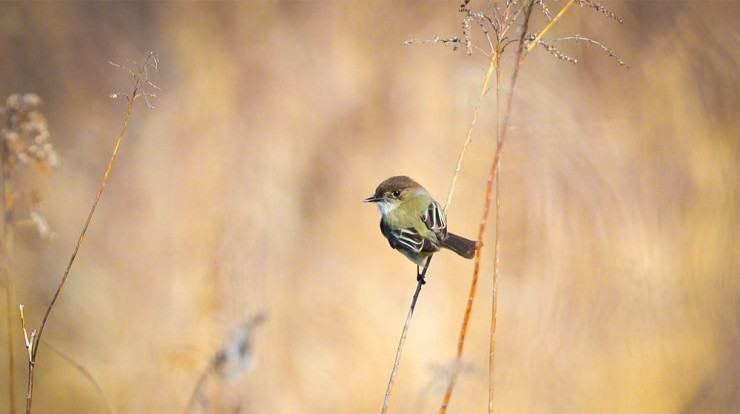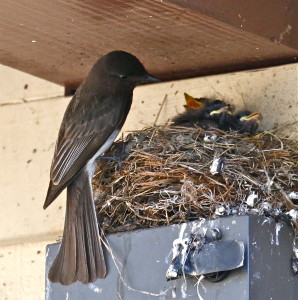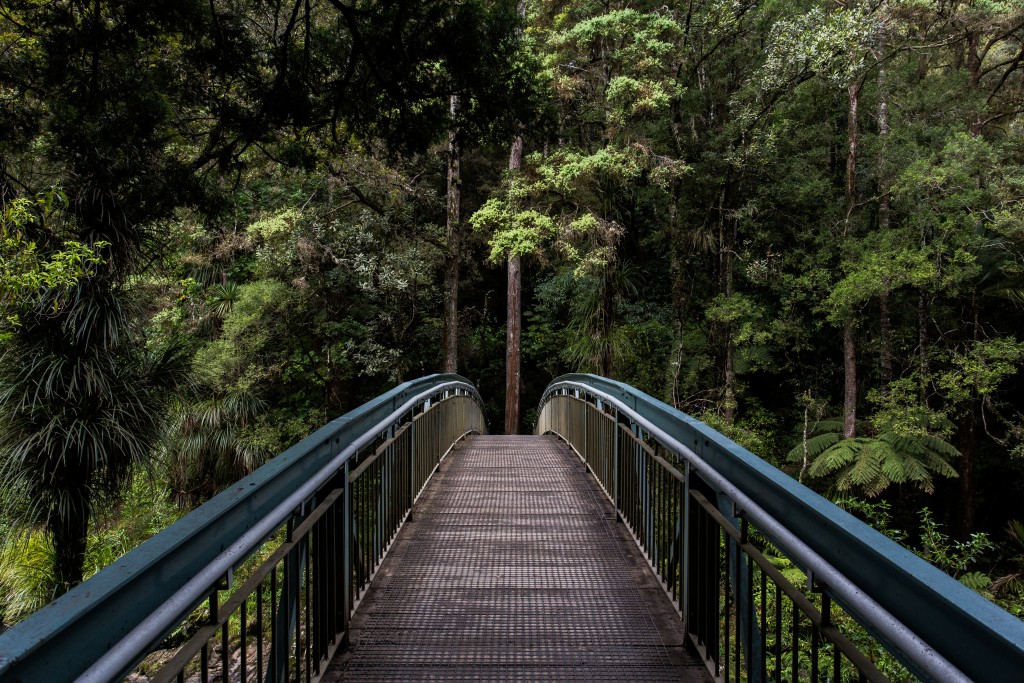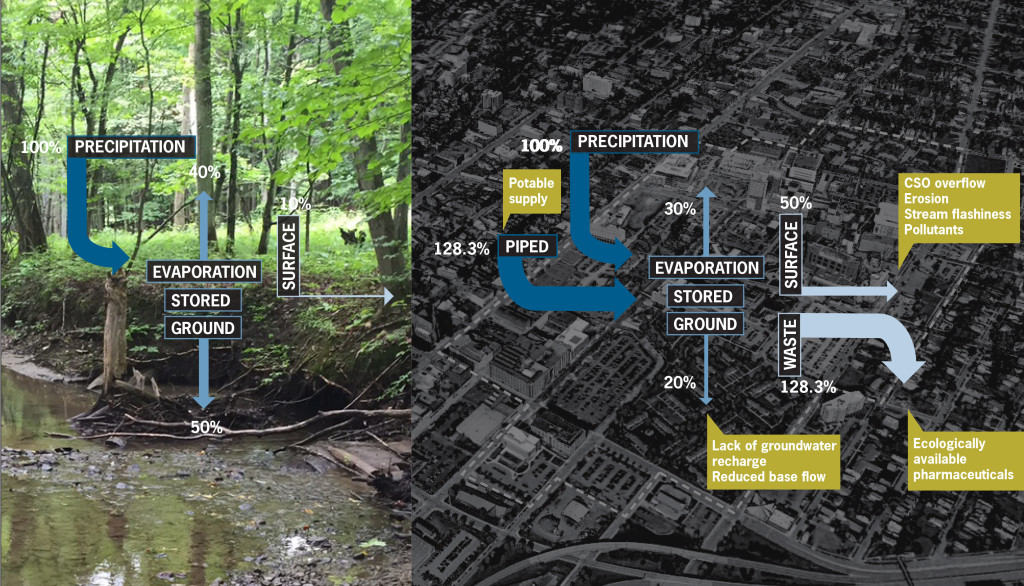

Features
The Value of Ecological Design
Terrapin Bright Green
Share
Learn more about our Phoebe work and services by emailing us at [email protected]. Follow the conversation on twitter: @TerrapinBG | #PhoebeFramework.
By Jake Jones
This post is part of an ongoing series discussing the foundations and theory of Terrapin’s Framework for an Ecological Built Environment (Phoebe). Phoebe is a suite of tools that uses ecosystem-based assessment to evaluate and improve the built environment. Phoebe merges sustainable design with environmental planning, industrial ecology, and restoration ecology. Its aspiration is to reconcile ecosystem dynamics and contemporary environmental pressures with human-dominated environments. These articles explore the ways these fields interact within the context of the thought process and goals of Phoebe.
You never change things by fighting the existing model. To change something, build a new model that makes the existing model obsolete.”
—Buckminster Fuller
The Significance of a Songbird
If you’ve seen mentions of Phoebe in our blog and newsletter, you’ve probably wondered why we named our suite of ecological design tools after everyone’s favorite quirky Friends character. Or if you’re an amateur ornithologist, you might have thought of the songbird, in which case you would have been right. “Phoebe” is the common name for three species of North American flycatchers. Although plain in appearance, Phoebes achieve the highest aspiration of our ecological design framework: a successful interplay between the human built environment and natural ecosystems. These birds exemplify adaption and resilience, topics that dominate current conversations about sustainability and climate change. Taking a closer look into the Phoebe’s strategies to survive and thrive offers applicable take-aways for a realistic yet industry-changing ideas to apply to ecological design at large.

This Black Phoebe has chosen to build its nest under a roof eave instead of a natural outcropping. Image copyright Teddy Llovet/Flickr.
Phoebes are what ecologists like to call “opportunistic species,” meaning that they quickly overtake newly created and transient habitats, in this case, habitats created by humans. Prior to widespread human development, Phoebes nested under the protection of caves and rock formations. Finding that our buildings and bridges offer the same security and strength, Phoebes have widened their nesting grounds to include our built environment. This, in part, has allowed their numbers to not only remain stable but actually push Phoebe populations to expand in human dominated areas. The Say’s Phoebe is even believed to be following the Alaskan pipeline north of the treeline, nesting within its crevices.1 Far from being a nuisance to humans, Phoebes keep insect populations in check and are early harbingers of spring, announcing their arrival with raspy PHEE-bee calls.2 Although the Phoebes’ adaptive strategies are small in scale (4.5 inches to be exact), they invite us to reconsider our notions of how the natural and built environments could interact.
While it may not be necessary to go as far as putting a price tag on the Phoebe’s nesting adaptation and resource efficiency, our Phoebe services do mirror the bird’s valuable strategies that link built projects and the natural landscape. Establishing such connections offer solutions to the issues of social and demographic change, economics, climate change, and ecology.
Big Goals Are Worth It
Audacious foresight for the betterment of humanity and the environment is inspiring. Our Ecological Design Framework (referred to simply as “Phoebe”) focuses on the most impactful project opportunities that will result in positive change on-site and far beyond the project property line. We recently discussed this in-depth to highlight the importance of Embracing the Ecological Perspective. Reframing traditional green building metrics and transforming them into bold built ecological goals provides a structured but open forum for teams to achieve meaningful ecological change. Striking an emotional chord akin to the COP21 feature Life in Syntropy or even REI’s recent #OptOutside marketing campaign has propelled Phoebe projects to find solutions that improve the human condition, ecosystem health, and the built environment.
To address these large-scale goals in response to the realities of design and environment, Phoebe directly considers the effects of climate change. Echoing a previous feature post, Designing for a Moving Target: Adapting Our Buildings to a Changing Climate, cities are being forced to adapt to rapid shifts in temperature and precipitation, as well as extreme storms and sea level rise. These circumstances deeply affect the functionality and viability of our buildings. Our built environment has been designed based on conditions that are no longer the norm. Phoebe services offer a path for designers to rethink how they view our built environment, including application of resilience thinking. The complexities of climate change require a systems-level approach to resilience planning. Phoebe services respond to social and ecological changes that are both gradual “press” changes and sudden “pulse” disturbances.
At the same time, Phoebe fuses aspirational goals with quantifiable metrics. Both elements are interconnected to form a powerful framework; you simply can’t make the world’s best peanut butter and jelly sandwich without the peanut butter and the jelly. Phoebe applies ecological, architectural, urban design, and biophilic metrics at every stage of the project to support this overarching vision. It is this combination of deep aspirational thinking overlaid with measurable interventions that allow Phoebe to holistically address temporally dynamic demographic shifts, land-use changes, and climate adaptations.
In Advancing Urban Sustainability, the advantages of applying such impassioned thinking are well stated: “We are more likely to break the molds of standard practice by striving for the impossible.” Using ecosystems as guides shifts the way we talk about performance at the building, campus, city, and regional scales. Applying Phoebe strategies increases the likelihood that we will affect dramatic change in the built environment by expanding and reframing the set of potential project solutions.
Connections That Optimize Value
The relationship between human systems and natural systems is an integral consideration in every Phoebe project whether it is located in an urban or rural area, on an academic or corporate campus, within an agricultural hub, at a place of recreation, or inclusive of an entire city. The Phoebe approach considers human well-being and productivity alongside ecological health and longevity no matter the size of a project site or its influence within the region. With such a wide range of land uses in which Phoebe can be applied, it is helpful to distinguish the benefits that Phoebe provides clients at distinct scales of interconnection.
The following interconnections are not hierarchical, rather, each one offers a unique angle from which to look at the human-centered and ecological challenges and opportunities of each project site. No single interconnection is more important than another, but one or two may be most relevant depending on project needs.
Interconnection 1: Human Benefits from Connection to Natural Systems
In our publication The Economics of Biophilia, we have demonstrated how designing with nature in mind makes financial sense in terms of health and productivity benefits. Phoebe aims to not only optimize the health benefits of biophilic design but also the services that may accompany engagement with landscapes; the thesis being that sensitively shaping nature balances the needs of ecosystems with human needs, which is the most likely way to preserve ecological integrity long-term. Engagement with nature may have the following values:
- Biophilic responses such as increasing attention and productivity, enhanced student achievement, and reduction in stress levels and off-task behavior
- Increased profit margins and reduced hospital budgets by achieving faster recovery rates for patients, decreased dependency on medication, reduced staff and family stress, and improved emotional wellness
- Engaging natural systems on-site for direct benefit such as pest management, stormwater management, and foraging, to name a few
- Increased appreciation of surrounding natural systems, which encourages occupants to practice environmental stewardship and conserve resources more effectively
Interconnection 2: The Built Environment as part of Regional Ecosystems
Familiarity of the complexity inside the boundaries of a project site is integral for a project to be successful. Combining this knowledge with an understanding of the context of the region strengthens the ability of design to leverage pre-development natural strategies that are time-tested and deeply valuable. When we zoom out to get perspective, we form an understanding of how a project site fits into the larger patterns of the area. Looking at entire watersheds, evaluating sewer systems, or studying wildlife migration patterns are all examples of how to inspire more robust on-site project strategies that integrate regional ecosystem conditions and relationships.
Phoebe uses this context to bridge on-site human impact with renewal of previously thriving natural systems—such as the flow of water or the vitality of the soil and vegetation on site—that are essential to long-term success of a project. These natural systems are also closely tied to ecosystem services that support our built environment. Ecosystem services range from food supply, freshwater and raw materials to carbon sequestration, pollination, and genetic diversification. Phoebe explores and analyzes a range of ecosystem services and ecological processes essential to a given project, resulting in:
- Reduced risk by reviving natural systems and cultivating ecosystem services that generate a return on investment
- Reduced costs by investing in low-cost/high-value ecosystem services present on site
- Improved resource efficiency by applying ecological processes to the built environment
- Increased resiliency and adaptability by identifying the temporal dynamics of the system and potential future disturbances and threats
- Leveraged historical ecological knowledge to improve design and construction outcomes based on historical references and future predicted pressures
Interconnection 3: Outsourced Impacts Meet Natural Capital
The resources that organizations collect, use, and dispense affects both bottom line performance and ecological performance. Often times the implications of these cycles occur far from a project site and with difficult-to-identify consequences. Although sometimes hard to see, natural capital—much like traditional forms of capital—can be saved or spent, gained or lost. Furthermore, the global and regional ecological stocks and flows that offer such natural capital are closely tied to the economics of an organization. Considering such connections, Phoebe integrates ecosystem impacts into planning and decision making, resulting in:
- Reduced risk by protecting and cultivating both global and regional ecosystem services that reinforce on-site operations, resource needs, and profitability
- Improved resource-efficiency by tapping into the ecological processes of the region
- Increased resiliency and adaptability of critical resources by identifying the macro-scale temporal dynamics and potential regional disturbances and threats of the region
- Defined value of natural resources to compare alternatives
- Measured outsourced impacts against costs to implement cost-savings and increase operational efficiency
Optimizing Our Ecological Built Environment
Phoebe’s purpose is simple: to draw from the powerful and eloquent insights found in our ecosystems to reimagine the role of architectural, urban, and landscape design with clients. Inspired, in part, by a songbird’s strategies, our Phoebe services enrich the triple bottom line ethos—now commonplace in organizational mission statements—with prioritized action that supports the the long-term success of the places we live, work, learn, heal, and connect. To integrate our ecosystems and communities by such inspiring means, Phoebe merely offers a path. In reality, it is the people and organizations willing to push the boundaries of design and construction that will accomplish the transformative change that Phoebe mobilizes and provokes. The conversation is just getting started; the next step is action taken by those ready to rise to the opportunity of ecological design innovation.
 Jake Jones was a biomimicry apprentice at Terrapin during the fall and winter of 2015. During his time at Terrapin he worked with the team to further explore how Phoebe could benefit clients while adding value to ecological design. At the time of writing Jake is designing his education in biomimicry and ecological design at Chicago-based Experience Institute. You can learn more about Jake at jakedjones.com.
Jake Jones was a biomimicry apprentice at Terrapin during the fall and winter of 2015. During his time at Terrapin he worked with the team to further explore how Phoebe could benefit clients while adding value to ecological design. At the time of writing Jake is designing his education in biomimicry and ecological design at Chicago-based Experience Institute. You can learn more about Jake at jakedjones.com.
*Header and feature image copyright Andrew C/Flickr.
References
- “All About Birds.” Cornell Lab of Ornithology. http://www.allaboutbirds.org/.
- Pelikan, Matt. “Wild Side: Drab looking, and a dull songbird, phoebes are a favorite.” MV Times. http://www.mvtimes.com/2015/04/08/drab-looking-and-a-dull-songbird-phoebes-are-a-favorite/
Topics
- Environmental Values
- Speaking
- LEED
- Terrapin Team
- Phoebe
- Community Development
- Greenbuild
- Technology
- Biophilic Design Interactive
- Catie Ryan
- Spanish
- Hebrew
- French
- Portuguese
- Publications
- Occupant Comfort
- Materials Science
- Conference
- Psychoacoustics
- Education
- Workshop
- Mass Timber
- Transit
- Carbon Strategy
- connection with natural materials
- interior design
- inspirational hero
- biophilia
- economics of biophilia
- Sustainability
- wood
- case studies
- Systems Integration
- Biophilic Design
- Commercial
- Net Zero
- Resorts & Hospitality
- Energy Utilization
- Water Management
- Corporations and Institutions
- Institutional
- Ecosystem Science
- Green Guidelines
- Profitability
- Climate Resiliency
- Health & Wellbeing
- Indoor Environmental Quality
- Building Performance
- Bioinspired Innovation
- Biodiversity
- Residential
- Master Planning
- Architects and Designers
- Developers and Building Owners
- Governments and NGOs
- Urban Design
- Product Development
- Original Research
- Manufacturing
- Industrial Ecology
- Resource Management
- Sustainability Plans
- Health Care
- Carbon Neutrality





